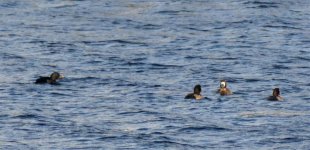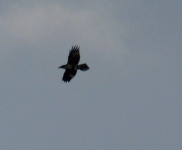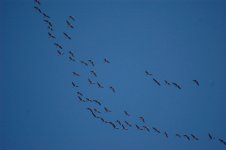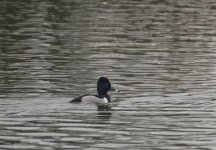I guess like many of you, the easing of lockdown has felt like a release and you're out birding as if making up for lost time.
Another good week for me, with a number of different locations including post-work evening trips to relatively local places.
19 April 2021 - Cuningar Loop
Highlight of this visit was the first
willow warblers of the year, almost a month after the first chiffchaffs.
21 April 2021 - Hogganfield Loch
Hogganfield Loch is in the north of Glasgow. I decided on the spur of the moment to head up after work at 5 pm. That meant two buses there and two buses back, an hour each way. But I felt a little like I still have cabin fever and it's making me get out as often as I can. Hogganfield Loch is part of the
Seven Lochs Wetland Park, an attempt to link different lochs together under one banner. The loch has an island in the middle and has scrubland on the eastern edge. It's a particularly important wetland for wintering birds in the Clyde area, with many of the birds being easily visible as they mingle with the resident mallards and tufted ducks, and it turns up rarities now and then.
When I went this evening, it was warm and hazy.
Among the 26 bird species seen was a
whooper swan - I'm not sure if this is a resident or if it's been left behind, because the loch holds a good number of them over winter. A
smew was seen near the island, and there were a fair number of
great crested grebes about. In the scrubland there's a small, quieter pond surrounded by shrubs and marshy ground, and there was a pair of
gadwall here, and the small trees had singing
willow warblers.
23 April 2021 - Cuningar Loop
Another post-work walk along the Clyde from Shawfield via Richmond Park to Cuningar Loop - my new local patch which as I mentioned above, I've expanded to cover more of the river.
25 species seen this night, highlights included a
bullfinch, and singing
blackcaps and
willow warblers.
Now up to 43 species for this new patch.
24 April 2021 - Lochwinnoch
This was my first visit to RSPB Lochwinnoch in over a year. It was relatively quiet when I got there in late morning, but it soon got busier, maybe partly because I tweeted a sighting at one point, so maybe some local birders came out!
40 species seen, including five different warblers:
blackcap, chiffchaff, grasshopper, sedge and
willow. A small group of
lesser redpoll were visiting some feeders. I actually got excited at seeing a
collared dove as it was my first of the year. I saw my second
gadwall of the week, alongside the
tufted ducks,
wigeon and
goldeneye. The latter were my first since earlier in the year when wintering birds were seen at Cuningar Loop.
I came within a couple of metres of a male
sparrowhawk. It was in the undergrowth hidden from view, but it flew up onto a low branch with some prey in its talons before flying away.
There was a small group of
pink-footed geese flying overhead, migration still on-going, and a pair of
lapwings were displaying.
The highlight of the day though was an
osprey hunting in the reserve. They are seen here quite often now, but it was the first I'd seen here. It dived towards the water a couple of times but didn't enter the water, then it flew east towards Castle Semple Loch and came flying overhead later back west towards Barr Loch.
Four different butterflies were seen today:
large white,
orange-tip,
peacock and
small tortoiseshell, and there was a
bee fly too.
25 April 2021 - Linn Park
Linn Park is a large park in the south side of Glasgow, on the border with East Renfrewshire. In many respects it's like any other park with large meadows, but the key habitat here is the White Cart River. This joins with the Black Cart and later enters the Clyde not far from Glasgow Airport. The river here is shallow and fast moving, with waterfalls and in some places deeper pools, just the kind of habitat that is rich in wildlife.
It was busy today with lots of dog walkers and people going right down to the water, so perhaps not ideal wildlife spotting conditions. At one point a wee boy came up to me and said "If you want to see something, there's an otter up at the rocks". I thanked him and made my way upriver but I wasn't to have any luck today. Otters remain for me a coastal species. I actually saw more bee flies today as I was sitting on a log watching out for the otter.
Of the 22 bird species seen today, the highlights were two out of three target species:
dipper and
grey wagtail. The third, kingfisher, evaded me again. There's a good walk along the river in this park. Sometimes the path takes you right down to the river, other times it takes you up high where it feels more gorge-like.
The new species seen this week take my year total to 82 so far.









